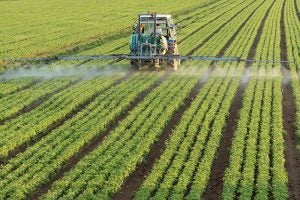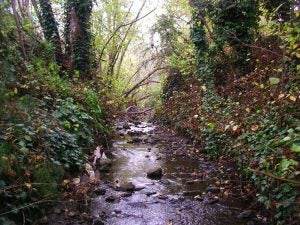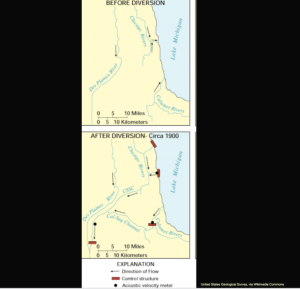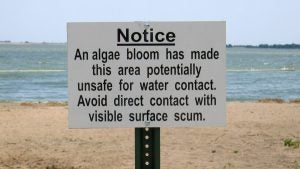Picture you’re a farmer in Michigan, fertilizing your crops. The fertilizer contains chemicals like nitrogen and phosphorus. You know the rain that’s scheduled to arrive later tonight will probably cause some runoff, but you’re not too worried. They won’t travel far you think– you live in the Midwest, the nearest ocean is thousands of miles away. The closest body of water is just a dirty old creek down the road.
That night, the rain pours over your crops and the fertilizer chemicals trickle down the rows of crops in a mini stream until they reach the creek. The particles are carried with the current, joined by chemicals from the factory down the road, the pesticides your neighbor uses in their garden, and the sewage from your town, floating downstream until they eventually reach Lake Michigan. Due to a reversal of the Chicago river, the Great Lakes (specifically entry into Lake Michigan), are connected to the Mississippi river. This means that the water and chemicals flowing from your farm, the neighbor’s garden, and the town’s sewage enter the Gulf of Mexico– the drainage system for all major rivers and tributaries in the Midwestern U.S.. These chemicals therefore factor into the increasing eutrophication of the Gulf and thus, the Atlantic ocean.
Fish in the Gulf of Mexico ingest your fertilizer chemicals, the neighbor’s pesticides, and the nutrients from the town’s sewage. Those that don’t die and are caught by fisherman transfer the toxins to unknowing customers at restaurants enjoying their favorite seafood dish. Other organisms on the ocean floor also perish. Vacationers walking along the shoreline are forced to abandon their beach day at the sight of cloudy green water and the smell of decaying algae.





